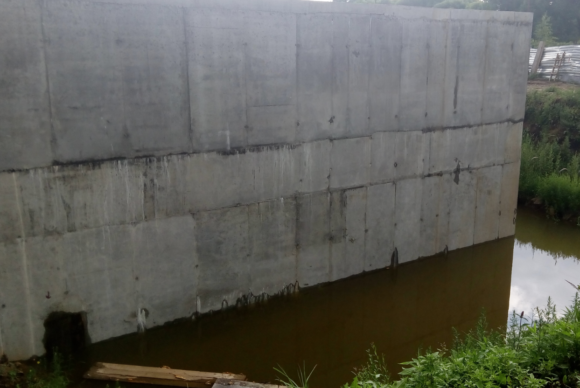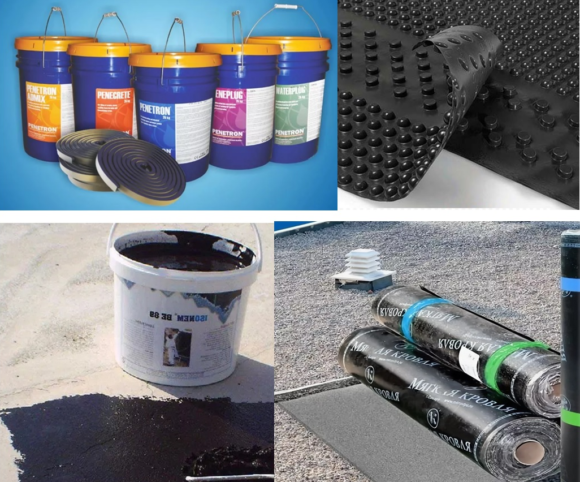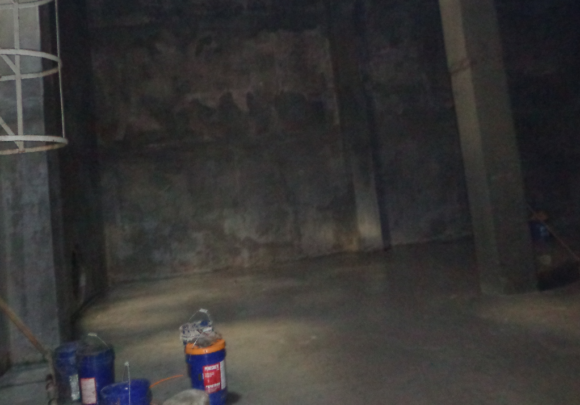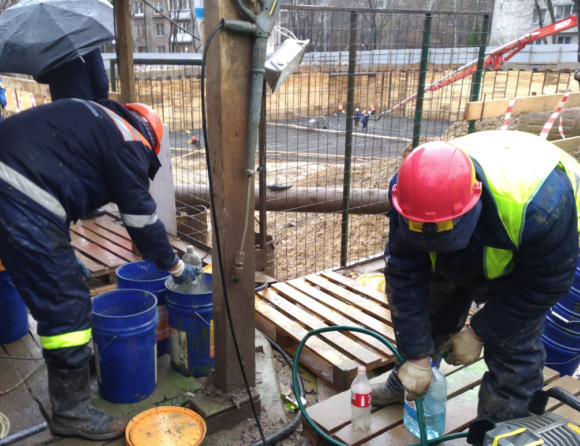The foundation is the foundation of the building, bearing the greatest load during operation. To avoid a decrease in the strength characteristics of the foundations, it is necessary to provide reliable waterproofing of the concrete structures of the foundations for the entire period of operation. When constructing the foundation, it is necessary to protect the foundation from the effects of negative factors, primarily, such as:
- Ground water;
- Snow melting;
- Seasonality, temperature changes fall-winter and winter-spring;
- Precipitation.

It is necessary to carry out works on waterproofing the foundation immediately, since after completion of construction access to the foundations is limited and, in the absence of basements, requires excavation of soils along the outer perimeter of the building with the need for subsequent restoration of the landscape at the building.
Content
Applicable types of waterproofing for foundations
There are a large number of waterproofing materials with the help of which you can waterproof the foundations. However, all of them can be divided into groups depending on the type of materials, below we list the most used:
- Bituminous;
- Roll;
- Membrane
- Lubricating;
- Penetrating.

We list briefly the main advantages and disadvantages of each type of material for waterproofing foundations:
- Bitumen-based materials have the advantages of low cost, require drying of surfaces and as a result create a temporary protective coating on the treated surface, the most ineffective waterproofing from the list;
- Rolled materials are fused using gas burners on a dry base, pre-treated with mastic. The cost is much higher than when using mastic, create a temporary protective circuit on the surface of the foundation;
- Membrane materials require highly qualified specialists in waterproofing and professional equipment for welding membranes. Materials and cost of work are the most expensive of those discussed. As a result of application, a protective screen is created that is welded along the edges of the membranes around the foundation. The main disadvantages of the concrete foundation structures themselves are not protected, membranes are used only from the outside;
- Coating waterproofing is applied from the outside of the foundation, to a moist base, with a protective layer of 1.5-3 mm. Creates a protective coating on the surface of the foundation in case of violation of which, the foundation remains without protection from waterproofing;
- For already built foundations, penetrating waterproofing is applied, applied on any accessible side of the concrete structure to a damp base. The use of penetrating waterproofing allows for reliable waterproofing of concrete structures of the foundations for the entire period of operation.
Waterproofing materials to protect the concrete structures of the foundations themselves
Summing up the intermediate results when choosing materials for waterproofing foundations, you and I found that bitumen, rolled, membrane and coating materials actually create a protective layer on the concrete surface of the foundations. At the slightest violation of the integrity of these protective coatings, the reinforced concrete foundation structures remain without protection from the negative factors of the aggressive soil environment.

Penetrating waterproofing materials only work directly in the reinforced concrete structures of the foundations themselves, providing long-term waterproofing and corrosion protection of structures for the entire life of the structure. This is the most reliable type of waterproofing structure.
Waterproofing materials for foundations under construction and already built
At the stage of construction of foundations, it is most advisable to use special waterproofing additives in concrete with the help of which waterproofing of the entire thickness of the structure is carried out at the stage of concreting. One of the most famous waterproofing concrete additives, Penetron Admix, a leader among manufacturers of waterproofing materials of this type, was developed in the United States, more than 60 years ago, and is used in 140 countries around the world. According to the technological regulations, it is introduced into the concrete mix at the concrete plant together with inert materials or directly at the construction site in a concrete mixer. As a result of the application, the construction time is significantly reduced, since there is no need to wait 28 days until the structure gains strength and it will be possible to carry out waterproofing work. Also, there is no need for remuneration of specialists in waterproofing, since all waterproofing is the introduction of a waterproofing additive in a concrete mixture.

For already built foundations made of monolithic reinforced concrete, the most reliable waterproofing solution is the use of Penetron penetrating waterproofing. The material is applied with a brush in two layers, on a moistened, previously prepared base of concrete structures. As a result of application, on any side of the construction that is convenient for applying, we have a significant increase in the concrete grade in terms of water resistance and frost resistance. The material is easy to use, you must follow the instructions for use.
Thus, using penetrating waterproofing for waterproofing foundations, we reliably and for the entire life cycle protect directly the reinforced concrete structures of the foundations from the effects of negative factors that contribute to the reduction of its strength characteristics, which subsequently leads to its destruction. And we do not create a waterproof protective waterproofing screen around it, if it is damaged, we actually have a lack of waterproofing of the foundation.





Alas, no comments yet. Be the first!